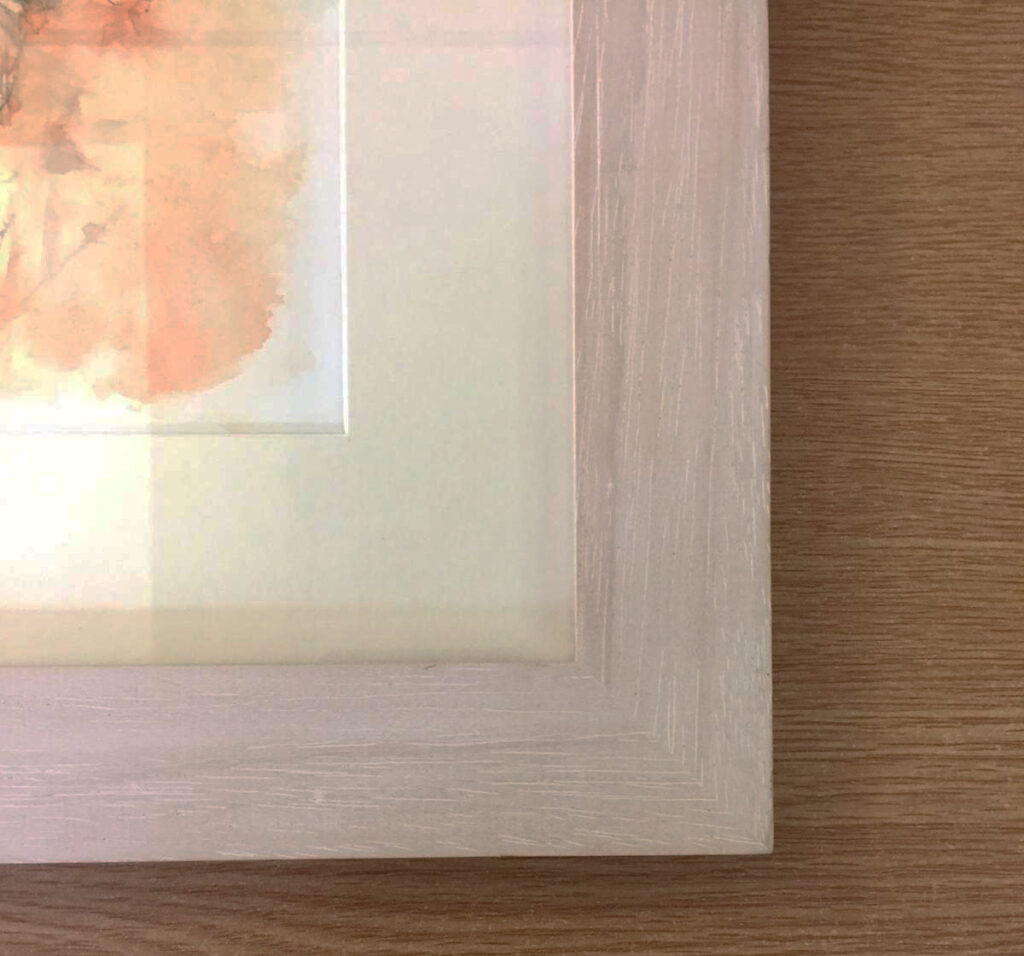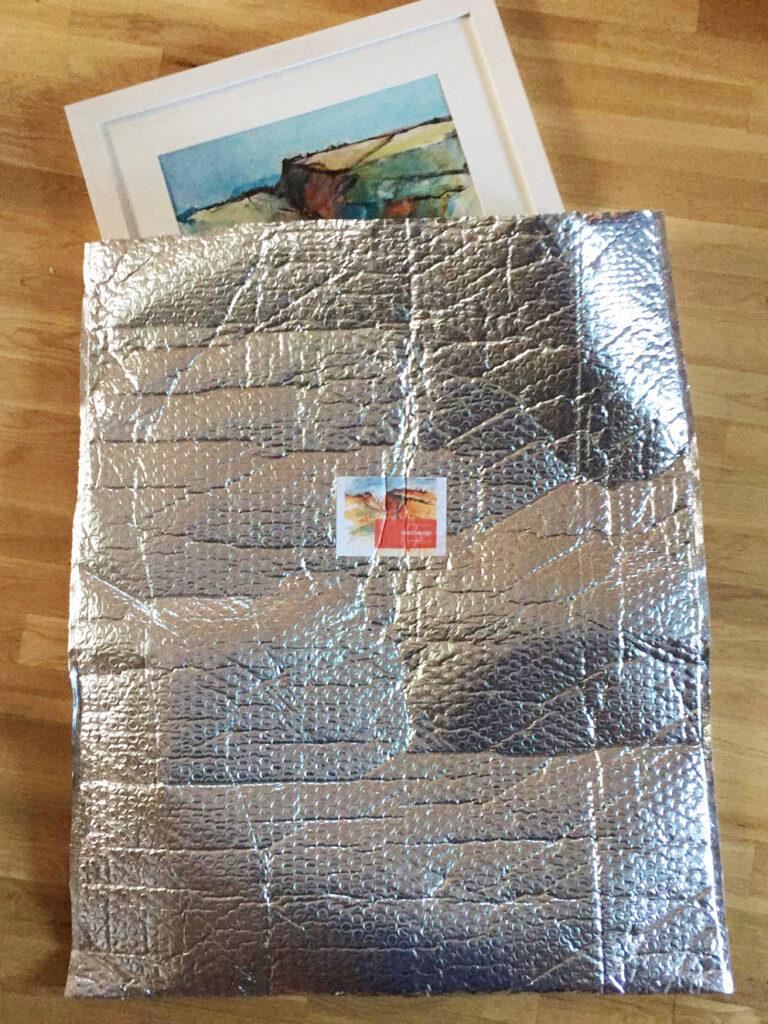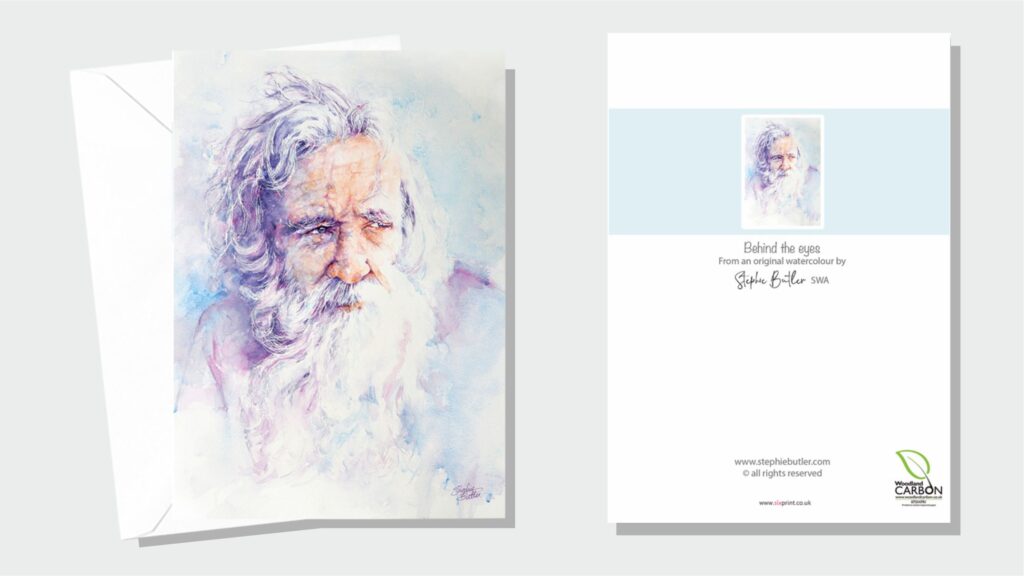Presenting your work for exhibition
The same level of care should go into framing as went into the painting itself. We take pride in presenting an exhibition which people make a point of visiting. The key is in paying attention to every aspect – including a professional level of presentation.
Framed paintings
The society reserves the right to reject any work that does not follow the framing requirements.
This is your showcase – make it work for you.
Frames
- We encourage the use of neutral-coloured frames.
-
If you wish to use a ready-made frame to save cost, consider getting a slightly bigger frame and having a wider mount cut professionally to enhance your work.
- Maximum artwork size, including frame is 80 x 80 cm.
- Metal frames or clip frames may NOT be used.
- All paintings must be property framed with good quality backing boards – no corrugated cardboard may be used.
- Frames must be sealed all the way round the back with proper framing tape, not masking tape or Sellotape.
- All frames must be secured with D-rings and strong hanging cord.
- Picture cord must be tightly stretched 1/3 from the top between the D-rings with no slack.
Mounts
- No coloured mounts, only cream, off-white or white allowed although a 5mm coloured edge to separate painting from mount will be acceptable. Float mounting on cream, off-white or white mounts is also acceptable.
- Although not obligatory, it is advisable to give your paintings a wide enough mount to allow them to ‘breathe’ in the frame. Ready-made frames may be good enough quality for exhibitions, but they often come with very narrow mounts.
Glass
- Glass must be used. No frames with Perspex in place of glass will be accepted.
- For safety reasons, glazed works with unprotected glass edges are not permitted.
- Ensure your frames and glass are both clean and dust free, with no scratches.
Identification
- All submitted works must bear a securely attached adhesive SEAW label on the reverse side of the work stating name of artist, title, medium, price, watercolour medium used, your painting processes and what inspired you to paint your artwork. Please complete all sections of the label with your submission.
- In addition, each framed painting must have a luggage tag attached to one of the D-rings on a piece of cord. The cord should be long enough so that the label can be hung over the top of the painting. The tag should bear the name of artist, title, medium and price.
Unframed paintings
Unframed paintings form an important part of our exhibition, in return producing more income and maintaining the high standard of both you the artist and the society.
The committee reserves the right to refuse poorly mounted, wrapped or badly labelled unframed pictures and to reject any works considered to be of unsuitable content.
Quality
- Unframed work should be of the same standard that would otherwise be framed.
Mounts
- No coloured mounts, only cream, off-white or white allowed.
- Acid free mountboard must be used for both the mount and the backing. Paintings will eventually show damage at a later point if acid free board is not used. Under no circumstances is cardboard or similar to be used as a backing. Paintings without a backing will also be rejected.
Wrapping
- Paintings must be fully enclosed within a transparent wrapping (do not use cling film or masking tape). Ideally Cellophane sleeves should be used to cover your work. Both Jacksons Art and Cotswold Mounts sell these in larger sizes if needed. If your painting is too large for a sleeve, use florist-weight cellophane, securely fastened – this can be bought in rolls from Amazon. The wrapping should be replaced once they become scratched or dull due to handling.
Identification
- An SEAW adhesive label stating the name of the artist, title, medium and price, the watercolour medium used, your painting processes and what inspired you to paint your artwork should be securely attached to the top, front, right-hand corner of the transparent cover. Please complete all sections of the label with your submission.
- This should be typed or written in neat handwriting.
Wrapping and transportation
- Each artist is responsible for the safe transport of artwork to and from each exhibition.
- If a transportation arrangement is made with another member, then the artwork must be in a padded bag (clearly marked with the artist’s name) which is easy to open.
- Works that are delivered wrapped up in bubble wrap and tape must be unwrapped on site by the artist or they might be rejected.
- Bags may not be stored at the exhibition, but must be taken away and returned on the take down day, if the artwork as not been sold.
What to look for
Things to think about when selecting a supplier;
- Size of the minimum run of each design
- Bulk discounts on multiple designs; often requires the designs to be of same size and on same card stock
- Envelopes and cello bags included in the price
- Templates available for submitting your design or a set up service and the cost per design
- What can be printed on the back? For example a thumbnail of your design plus your contact details
- Use of sustainable materials and recyclability
Greetings cards
Greeting cards are an important part of our exhibition and should be of a good standard. Customers often buy these as a keepsake to frame and put on the wall, so is also important they be printed on quality card with the right ink and are professionally presented. Any cards not meeting the requirements when handing in, will be rejected and not put out for sale.
Image
It is very important to start with a good image of your work, the larger file size the better quality of the card. Get used to taking a large photo or scan of your finished work. It can be used for printing other products and is a valuable record of your art. Make sure the image is cropped up to the edges of the painted area.
Card Stock
Cards should be printed on acid free card stock of at least 280gsm. Any card weight lower than this will give you a flimsy result, which may be rejected and unlikely to be sold.
Ink
Most home printers use dye-based inks, which will fade. Unless you have a printer that uses pigment-based inks, you should have them printed by a professional printer.
Envelopes
These should be the correct size to fit the card. Envelopes that are too large or the wrong shape look very untidy and unprofessional.
Cellophane bags
All cards and envelopes should be sealed in cellophane bags which fit them snugly. If there is too much space in the bag, they tend to fall out of the card spinners and the cards get damaged.
Size
Cards should be a standard print size: A5, A6 or square. Very long thin cards tend to fall over in the card stand and get lost. Committee members are always happy to advise or recommend the card providers they use please email contactSEAW@gmail.com.
Printing
Cards should be printed images and not original paintings as we have a standard price of £2.50 per card.
If you are unable to print them yourself at the required standard, there are many printers that can do this for you, including setting them up. A quick google search will find them for you.
Apart from sales, this is a major marketing opportunity for you and your art. Use it well by setting your standards high.






